International Physicians for the Prevention of Nuclear War (IPPNW) International Physicians for the Prevention of Nuclear War (IPPNW) is a non partisan federation of national medical groups in 63 countries, representing doctors, medical students, other health workers, and concerned people who share the goal of creating a more peaceful and secure world free from the threat of nuclear. The IPPNW congress with the theme ‘Disarmament, Climate crisis and Health’ took place between 26th– 30th April, 2023 at the Travelers Beach Resort in Mombasa, Kenya. The event explored the profound impact of nuclear weapons on non-nuclear states and the Global South, while also examining the intersection between climate change and nuclear disarmament.
The IPPNW World Congress provided a platform for experts to delve into various critical themes, unveiling the intricate connections between disarmament, climate crisis, and health. Some key topics addressed included: 1. US Military: The Leading Carbon Emitter: The congress shed light on the fact that the US military stands as the largest producer of carbon emissions globally. Recognizing this crucial aspect of the climate crisis helps emphasize the need for comprehensive actions and policy changes. 2. Climate Crisis and Conflict: Discussions underscored the heightened likelihood of conflicts arising from the climate crisis.
The increasing scarcity of resources and the environmental consequences of climate change contribute to tensions and potential conflicts on a global scale. 3. Uranium Mining’s Impact on the Global South: The Congress emphasized the significant impact of uranium mining on the Global South, predominantly sub-Saharan Africa. The extraction process and its associated environmental hazards disproportionately affect communities in these regions, underscoring the urgency for environmentally just practices.
Travel Preparation In order to travel to Kenya, we had to undergo all the required vaccinations, (Yellow fever vaccine is compulsory for travelling to Africa, which is available only at Kolkata). So, along with my son, Harz (Houba); my nephew, Telhei Ningthoujam; Dr. Ksh.Manglem and his daughter Ms. Ksh. Sushma Devi; Dr. Y.Mohen; Dr.Rakib; Forest Officer Mr. N. Munal and his better half; Dr. Ksh. Memcha; and myself (Dr.Shadhana Ningthoujam), we all flew to Kolkata, got the vaccination done and then came back to Imphal. For Visa & Registration for the conference and hotels, everything was done online, with the help of Dr. Arun Mitra and Dr. Rakib. Dr. Arun Mitra, Co-President of IPPNW, President of ‘Indian Doctors for Peace and Development’ ( IDPD ) and campaigner of ‘International Campaign to Abolish Nuclear Weapons’ ( ICAN ).
IPPNW’s tremendous efforts for nuclear disarmament led in achieving two Nobel Peace Prizes; the first Nobel Peace Prize in 1985 by IPPNW, and ( ICAN ) achieving the second Nobel Peace Prize in 2017. Through his effort, our team had been given a considerable travel subsidy amounting to nearly 50% of the actual travel cost. So, we are extremely grateful and indebted to him for making our journey much lighter. Except for myself and another Forest officer, none of the other delegates brought their family. I took along my son Harz (Houba) and my nephew Telhei Ninthoujam. We now were ready for the travel, having packed all of our required medicines and other necessary requirements in advance for the journey.
The volunteers of IPPNW too, were made to enroll in the life membership of the IPPNW. After all these formalities were met, we were finally ready to start our journey. The travel itinerary was to be followed very strictly as a team and under proper co-ordination. Altogether our Indian delegation consisted of 16 members, of which there were 6 volunteers, one Forest officer, his wife and the medical team. The medical team consisted of doctors from different professions. As D-Day arrived, Dr. Nara, the President of the Manipur IDPD State branch, came to see us off at the Imphal airport. Journey to Kenya Finally, the day arrived to take the Kenyan Airlines from New Delhi to Kenya. During the flight, suddenly, in mid air; one hefty African fellow aged about 65 years, had a fainting attack. The air hostess called out in emergency for any doctors on board to come and help him.

Our team immediately responded, but since no one had any medical equipment, it acted as an initial barrier for the emergency call. But luckily, I had my stethoscope with me, and on taking a reading found out that he was having a hypo-glycemic attack, and that it was not a serious heart attack. So, to counter the emergency, we provided him a sugary drink and other necessary supplements, after which he recovered. Our team was appreciated by all on board. On arrival at the Kenya airport, we were appreciated by everyone over there too. We then headed straight towards the Mombasa hotel after having completed the formalities of immigration. Mombasa is a coastal city in southeastern Kenya along the Indian Ocean.
It was the first capital of British East Africa, before Nairobi was elevated to capital status in 1907. It now serves as the capital of Mombasa County. The town is known as “the white and blue city” in Kenya. Mombasa opens the door to thrilling safari adventures. One can find unique places like Haller Park, where we can feed giraffes, and Big 7 Kitheka Safaris for memorable day tours. Mombasa’s safari adventures brought us closer to nature’s marvels, including lions and elephants. Our conference was held at the Mombasa hotel, which being near the seaside had a lot of places to be visited.
We did some sight-seeing around the Mombasa area, the Museum jewellery area showrooms, historical fort and sea beach area. Mutunguruni trees, a significant tree in the area; are prominent in Mombasa and are known for their size longevity, and ability to store water. They can reach significant heights (up to 85 meters tall ), making them visually striking. Before the conference, all the participants from different countries, like , Japan, Iran, Afghanistan, Kenya, and other countries, etc. met at the interaction room which was located at the nearby sea beach restaurant, where we exchanged ideas.
Due to the Russia-Ukraine war, wheat/food supply from Ukraine to Africa had been totally cut off, so as a result, in order to be self sufficient, Kenya had started growing their own food. At the end of the conference, we had a valedictory function, which comprised of a grand dinner and dance party. After that, we spent time swimming, dancing, etc. At the beach stalls, we bought some typical African items. The next day, in order to go for the safari trip, we all took a small plane to Masai Mara, which accommodated around 20 persons. Kenya is visa-free for Indians , but not if one is specially travelling to the Masai Mara safari. We proceeded to the Masai Mara jungle resort for the safari ride. There was a choice for Hot air balloons safaris ride and jungle safaris. I opted for the jungle safari to observe the cutting edge conservation efforts right from the ground level.
The Safari ride was on a land cruiser. The walkie talkie informed as to where the animals were. Kenya and its awe-inspiring, breathtaking landscapes, incredible wildlife and vibrant cultures blew us over at first breath. Later in the evening, we took a local tour ride, in order to get a perspective on how people live in the suburban areas in Kenya. We visited Masai village, to find out how the community exists, and got to know that the Church protects and preserves the culture & tradition of the local people, so that the tradition does not go extinct. Dr. Ksh. Manglem on interviewing the dwellers of Masai village, a vivid account of the dietary practice of the indigenous people was learned that the adult population fed purely on the meat, milk and blood of the domestic animals (buffalo, cow, goat), whereas only the children fed on vegetables and eggs. The adults fed on the blood from the jugular veins of the neck of the animals, and left the neck to heal on its own; so that they would later drink the blood again and again!
At the Mara river, we encountered herds of hippopotamus bathing and also sighted half submerged crocodiles too, lurking around for an easy prey. I was so surprised to learn from the security guards that the Hippo loves eating Basil (Tulsi) which grew in plenty on the river banks. Pic Courtesy : Athletics Illustrated This part of the world is famous for the ‘Great Migration’, comprising mostly of Wildebeests lead by zebras. Wildebeest (also called gnu) are a member of the antelope family. The front end of their body is heavily built, while the hindquarters are slender with spindly legs. The species forming the large herds of the Serengeti-Mara ecosystem of Kenya and Tanzania is known as the western white-bearded wildebeest. Their favourite habitats are open woodlands and open grassy plains.
What Is the Great Migration? The Great Migration is the largest herd movement of animals on the planet. In fact, with up to 1,000 animals per km², the great columns of wildebeest can be seen from space. It is a spectacular sight when countless ruminants crosses the Serengeti river in search of greener pastures.
The Great Migration The constant movement of columns of wildebeest, joined by a host of companions, follow an age-old route in search of grazing and water. After calving in the southern part of Tanzania’s Serengeti near the Ngorongoro Conservation Area, the animals journey through the Serengeti up and around in a clockwise direction towards the Masai Mara in Kenya, before returning once again near the end of the year. The numbers are astonishing: over 1.2 million wildebeest and 300,000 zebras along with topi and other gazelle move in a constant cycle through the Serengeti-Mara ecosystem in search of nutritious grass and water. Guided by survival instinct, each wildebeest will cover 800 to 1,000km on its individual journey along age-old migration routes. Hungry predators including lion, leopard, cheetah, hyena, wild dog and crocs make sure only the strongest survive in this natural spectacle also known as ‘the greatest show on Earth.’
The journey is beset with danger: young calves are snatched by predators, the slow are brought down by prides of lion, brave beasts break legs on steep river slopes, crocodiles take their share of the stragglers, and the weak and exhausted drown. The three groups of migrant grazers have different grass-eating habits: as one group eats the top of the tallest grass, the next group will eat away some of the medium-height grass, until finally it is almost completely eaten, and the herds move on. This means each group sticks to their own kind with only a small overlap in their distributions.
The grasses of the plains have the highest protein content in the whole of the Serengeti, as well as being high in calcium. It is unclear how the wildebeest know which way to go, but it is generally believed that their journey is dictated primarily by their response to the weather; they follow the rains and the growth of new grass. While there is no scientific proof of it, some experts believe that the animals react to lightning and thunderstorms in the distance. It has even been suggested that wildebeest can locate rain more than 50km away.
The Great Migration Watching the herds blindly jump from riverbank ledges and into the river waters is spectacular to say the least. Eventually the massive herds are rewarded with spoils of the wide open Masai Mara plains. For a short while, life is good. When the food supply dwindles and the rains move on, so do the herds. As the herds of wildebeest, zebras and gazelles enter the Masai Mara they are met by more than their fair share of lethal predators. Aside from the threat of the big cats, the lemming like herds are also faced with over 3000 crocodiles lurking in the murky waters of the Mara River during their river crossing.
The Great Migration The following picture is an aerial view of a herd of wildebeests following a few leading zebras.
The Great Migration Highlights of the Great Migration The total area under conservation in the Greater Maasai Mara ecosystem amounts to almost 1,510 km2 (580 sq mi). It is the northernmost section of the Mara-Serengeti ecosystem, which covers around 25,000 ha (62,000 acres) in Tanzania and Kenya. The Mara River, along with its tributaries the Sand and Talek rivers, are the major rivers draining the reserve. Shrubs and trees run along most drainage lines and cover the hills. The terrain of the reserve is primarily open grassland with seasonal riverlets. In the south-east region are clumps of the distinctive acacia tree. The western border is the Esoit (Siria) Escarpment of the East African Rift, which is a system of rifts some 5600km long, from Ethiopia’s Red Sea through Kenya, Tanzania, Malawi and into Mozambique. We got to witness with our own eyes the monumental tectonic cracks extending over 3500 km. (2174 miles ) from the Red Sea in the north to the Mozambique in the south-east stretching across Ethopia, Kenya, Tanzania due to the impact of the Somalia plate moving towards Indian sub continent at the rate of one inch per year.
The Great Rift Valley is a series of contiguous geographic depressions, approximately 6,000 or 7,000 kilometres (4,300 mi) in total length, that runs from the southern Turkish Hatay Province in Asia, through the Red Sea, to Mozambique in Southeast Africa. While the name remains in some usages, it is rarely used in geology where the term “Afro-Arabian Rift System” is preferred. We witnessed the beauty of Kenya’s coastline, where turquoise water blankets it at high tides. The stunning landscapes, diverse wildlife & rich culture, are perfect for nature lovers. It is really worth an adventure for those interested in experiencing unique cultural tradition too. Pic Courtesy : Wkipedia Pic Courtesy : Adobe Stock Wildlife Wildlife tends to be mostly concentrated here, as the swampy ground means that access to water is always good, with tourist disruption being minimal. The easternmost border is 224 km (139 mi) from Nairobi, and hence it is the eastern regions which are most visited by tourists. It has a semi-arid climate with biannual rains and two distinct rainy seasons. The ‘long rains’ last around six to eight weeks in April and May and the ‘short rains’, in November and December, last around four weeks. Elevation: 1500-2180m; Rainfall: 83mm/month; Temperature range: 12–30 °C (54–86 °F) We observed that the water of the Marai river were crawling with crocs and hippos; but we were told that they never cross each other’s line of habitat. The beauty of wild beasts is that, when one moves, all the others follow unitedly.
Their strategy is to cross in lines in compact groups, so as not to crush their young. We observed that the Zebras eat the soft top of the grass, and then the rest of the grass stalk is eaten up by the buffaloes. The Great Migration saw herds of hyenas, impalas, antelopes, deers, zebras, giraffes, ostriches, etc. The lioness lurked in the bushes, and leopards climbed at a higher level in order to set its eyes to gaze at us. We saw lion cubs playing under the watchful eyes of their mother. With the help of binoculars we observed herds of elephants, with their magnificent long ivory teeth. Though we were not so fortunate as to experience the great migration, it not being the right season, we satisfied ourselves with the various wildlife present at the nearby premises. We encountered a bridge which is halfway between Tanzania and Nairobi.
The bridge on which I am seen walking on leads to the Hippopotamus Bar, which is near the jungle resort. We learned that the main income of Kenyans comes from Agriculture & Tourism with Shilling being the currency of Nairobi. Just before dinner, we prepared a Manipuri snack named ‘fola’ consisting of (beaten rice, jaggery, banana, milk powder), and we all had it amongst the beautiful surrounding in front of our jungle resort. As dinner time approached, security guards escorted us along with the IPPNW team to the dining area so as to safeguard us from the wild animals predating around the area. We visited certain areas to see the local handloom and handicraft and we bought some souvenirs.
From amongst the safari souveniers, I bought some hand made bracelets, keychain, wrap-arounds, etc. Return Journey 1st may, 2023 : Left the safari resort after spending two nights there. 3rd May, 2023 : Flew from Nairobi airport to New Delhi airport, flying 20 hours straight. On reaching Delhi, we came to know that Manipur was burning with a conflict flaring up between the Meiteis (original indigenous people) and Kukis (immigrants from Burma). 4th May, 2023 : Reached Imphal airport. But, the short half-an-hour journey homewards from the Imphal airport onwards, was not easily done as we had to get down five times, to let the frenzied mob checked our ID cards during each and every turning. Finally, we reached home in great difficulty with almost trembling legs and a weary heart. The reason being; our own homeland , Manipur, had started burning from the 3rd May, 2023; and it was the very high tension next day that we had arrived at the airport. It was so ironical that we had gone to attend the conference at Kenya to stop the Ukraine War, but on reaching home, we encountered a more burning issue and scene in my hometown itself; that a gun conflict had started, and houses were burning, people were dying, and thousands had been rendered homeless in an instant. Conclusion With a very high enthusiasm, we had started the journey onwards to Kenya, to shed some light in the dark. The conference being the major event to bring out solutions to bring the light on and shine rays of hope on Kenya. But, the same enthusiasm was totally blackened out when we reached our own homeland.
The sun which used to always rise from the easternmost part of India, that is, my homeland, Manipur, had set. Manipur had gone dark, with the lights going out from the burning homes; the rot of the corpses of the gun conflict; the wails of the victims and relatives; the bandhs on the highways; the banning of internet; drones bombing our homesteads; and people dying in their own beds due to the bombardment. In short, the light had gone out from the valley of Manipur. Everywhere there was chaos and cries of despair.
My grief knew no bounds as I had set out to make the sun shine again elsewhere, but my own homeland was plunged in darkness and it still is in darkness, with hope having evaporated away. I long to see my motherland Kangleipak ( Manipur ) shine once again, as it used to, brightening up from the easternmost corner of India; and which will thus help to brighten up the whole world. Oh God, How I long for Light once more from the present Darkness ! When is my Motherland going to see that morning sunrise again ???_ वो सुब्ह कभी तो आएगी That morning will surely come sometime….
Bibliography:
- Wikipedia
- Asilia Africa

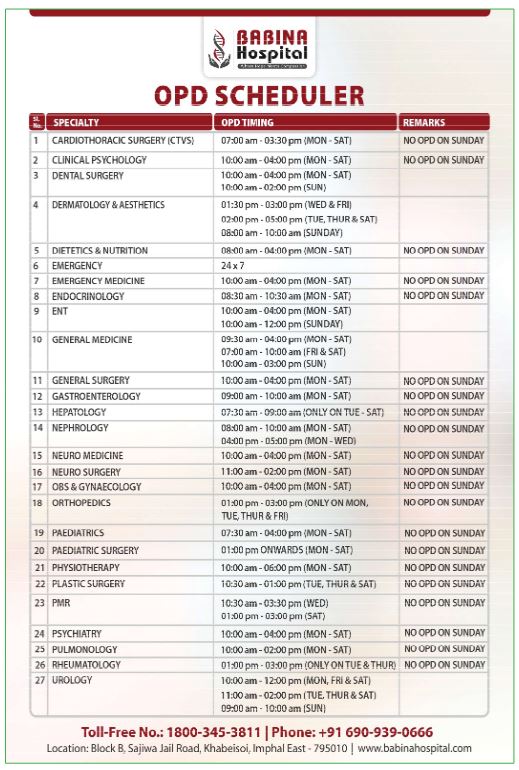
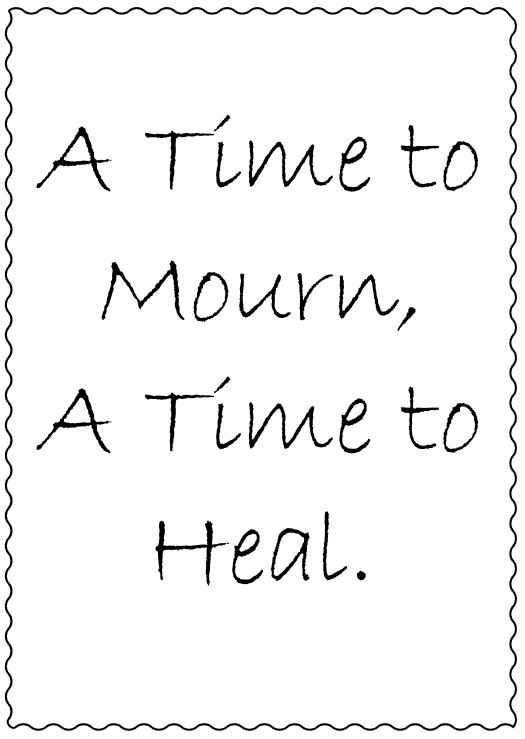

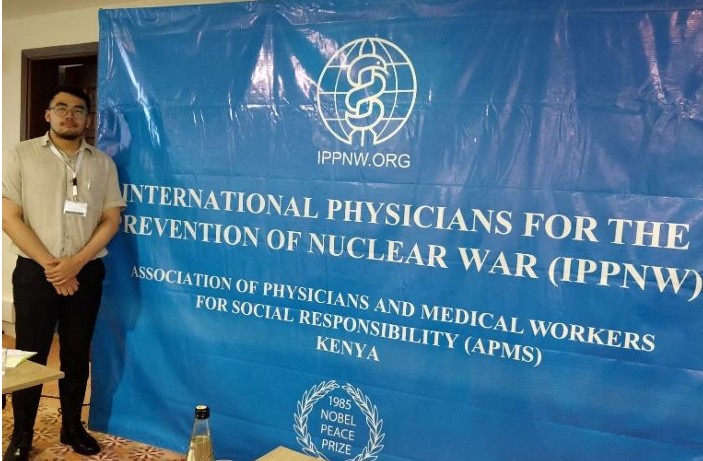
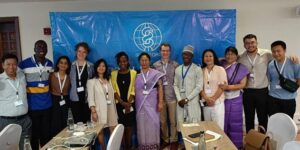
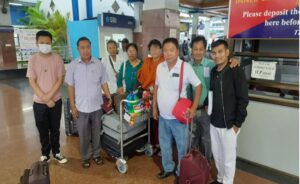
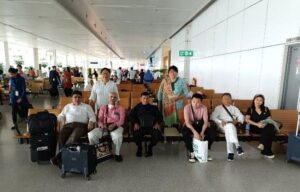


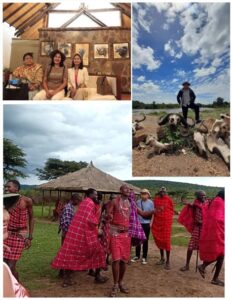
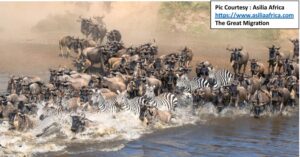

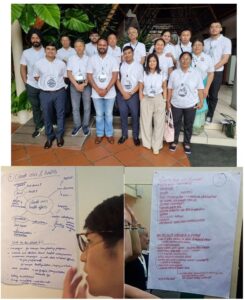

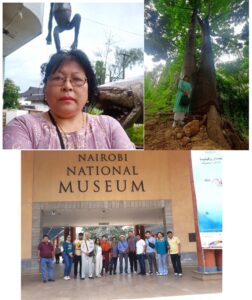
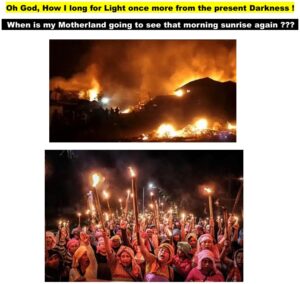


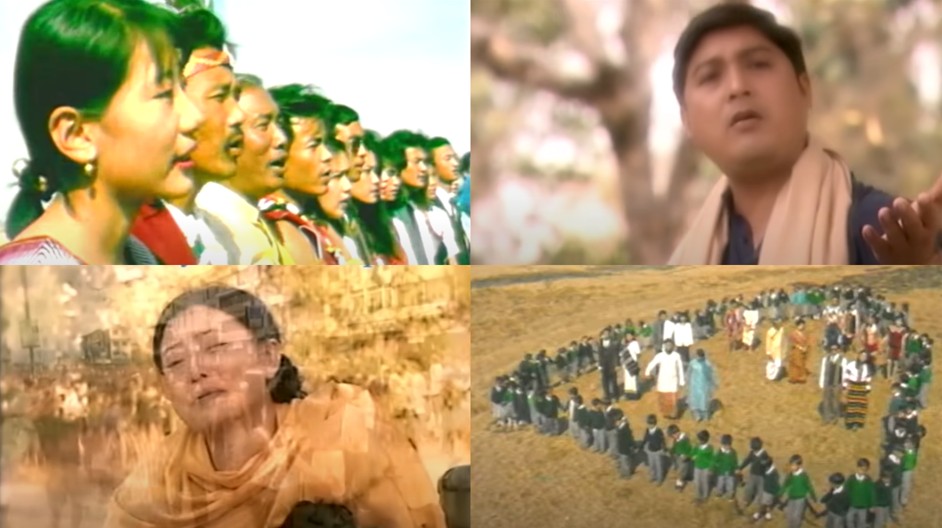

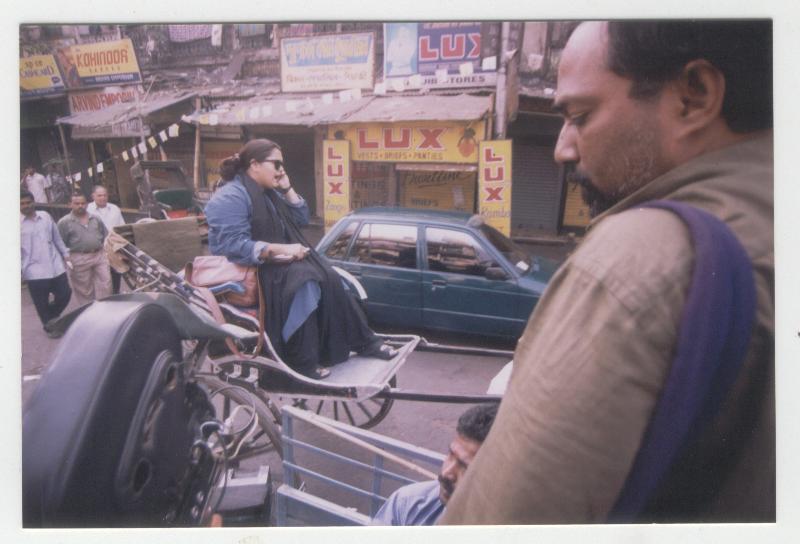
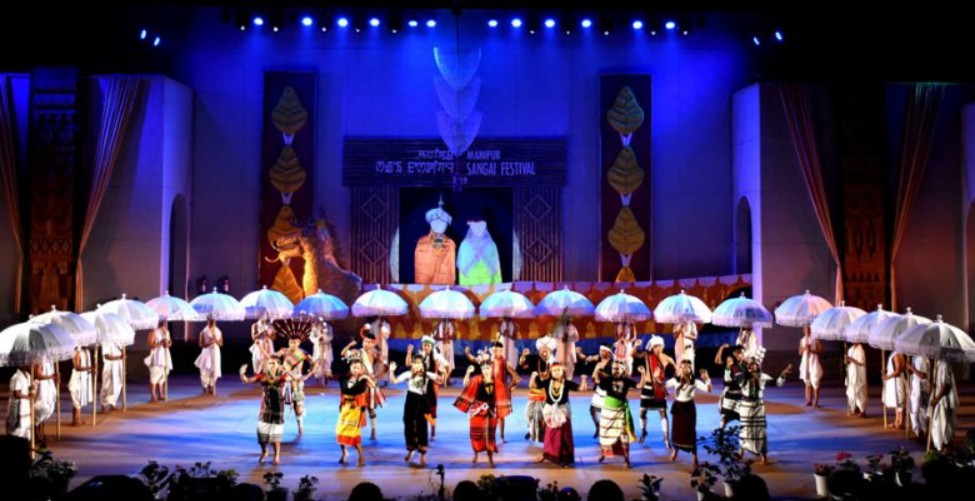


2 thoughts on “A Journey From Darkness to Light IPPNW Kenya April 2023”
Very nice 👍
The three groups of migrant grazers have different grass-eating habits: as one group eats the top of the tallest grass, the next group will eat away some of the medium-height grass, until finally it is almost completely eaten, and the herds move on. This means each group sticks to their own kind with only a small overlap in their distributions.
Quite surprised to learn this nature give. And the natural sunrise of the motherland (Kangleipak) may come soon!!!!
Comments are closed.